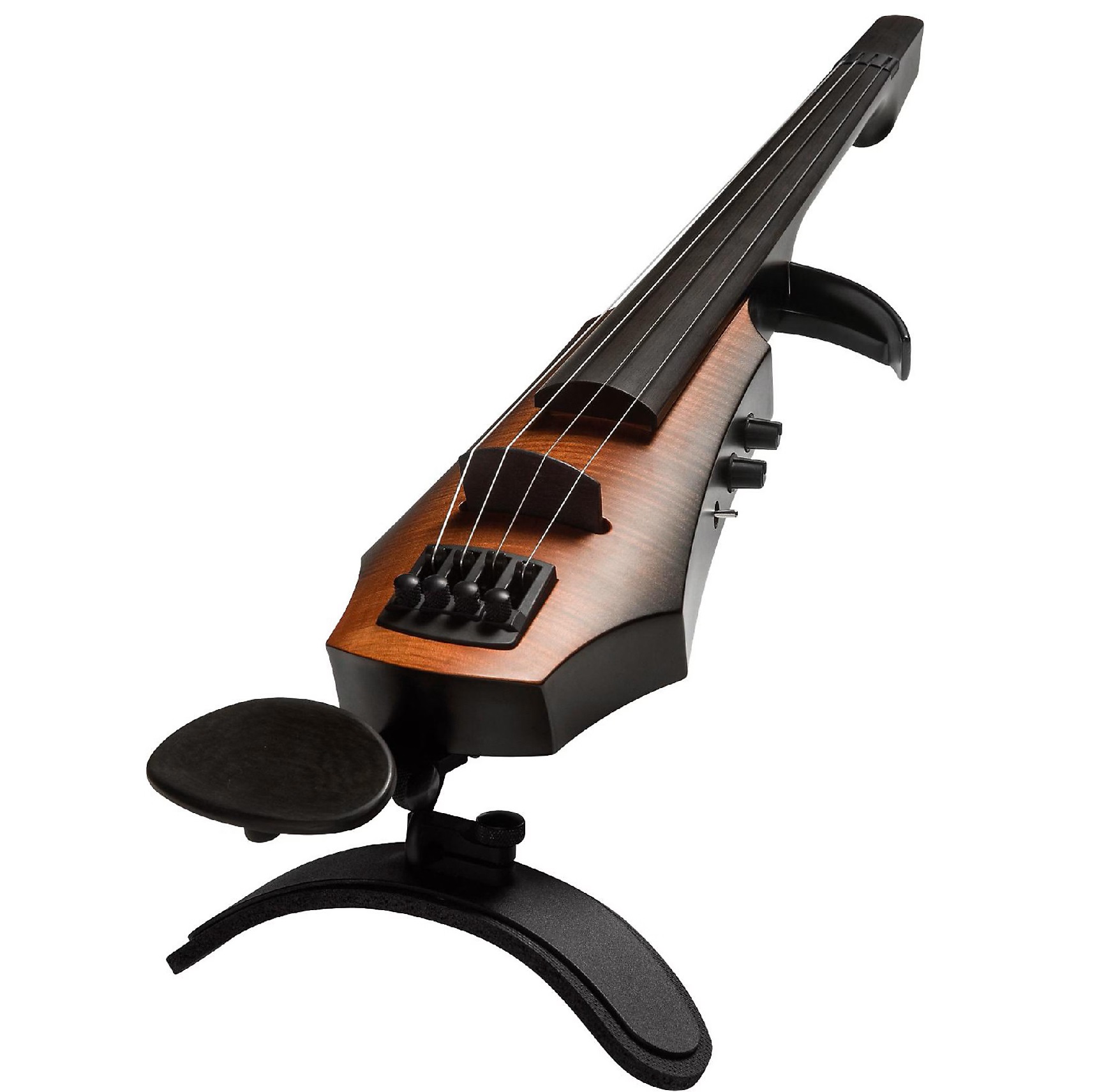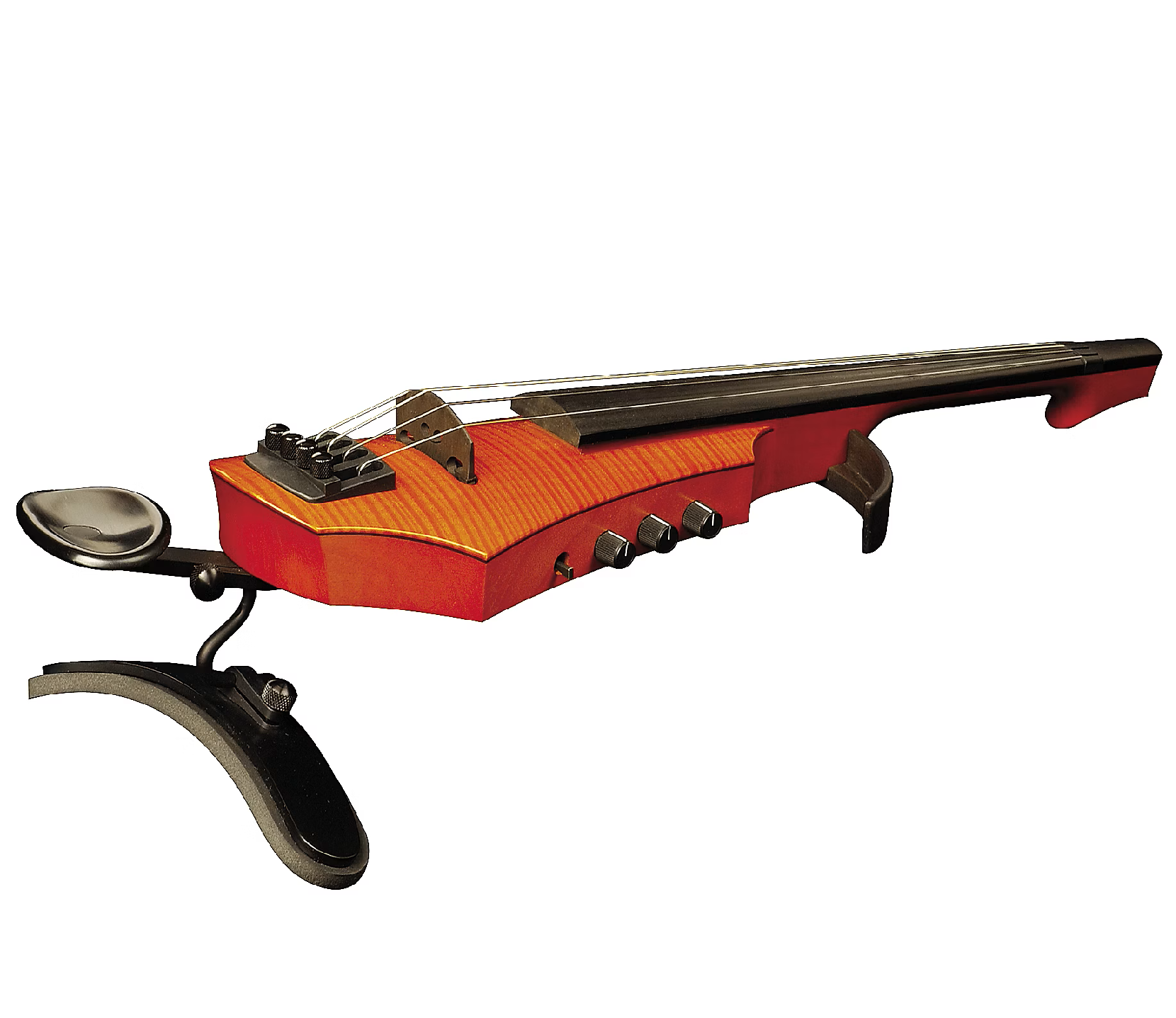Electric viola
Bowed Instruments
Europe
Between 1901 and present
Video
The electric viola is a modern adaptation of the traditional acoustic viola, designed to be electronically amplified. Unlike its acoustic counterpart, the electric viola does not rely on a hollow wooden body for sound production. Instead, it features built-in electronic pickups that convert the vibrations of its strings into electrical signals, which are then amplified through speakers. This allows for greater sound projection, customization, and effects processing.
The electric viola is commonly used in contemporary music genres such as rock, jazz, electronic, and experimental music. The electric viola is classified as a string instrument, similar to its acoustic counterpart. It falls under the bowed string family, which also includes the violin, cello, and double bass. However, unlike traditional string instruments, the electric viola belongs to the category of electro-acoustic instruments or purely electronic instruments when it lacks a resonating chamber.
History and Evolution
Early Developments
The concept of electric string instruments began in the early 20th century, primarily with electric guitars and violins. The electric viola was a natural extension of these innovations, emerging as musicians sought amplified and modified sounds beyond the limitations of traditional acoustic instruments.
The 20th Century Boom
By the mid-20th century, companies such as Fender, Yamaha, and Zeta began producing electric string instruments, including the electric viola. Advancements in pickup technology and electronic signal processing facilitated the development of instruments capable of producing diverse tones, appealing to experimental musicians.
Modern Electric Violas
Today, electric violas come in various designs, featuring solid bodies, semi-hollow constructions, and even MIDI-compatible systems for digital sound manipulation. Modern manufacturers incorporate cutting-edge materials and innovative pickup systems, allowing players to explore an expansive range of sonic possibilities.
Materials Used in Construction
Electric violas differ from traditional acoustic violas in terms of construction materials. While acoustic violas are primarily made of wood such as spruce, maple, and ebony, electric violas incorporate a variety of materials, including:
Some electric violas have wooden bodies, while others use carbon fiber, plastic, or other synthetic materials to enhance durability and reduce weight. Electric violas often include metal or plastic parts for tuning pegs, chin rests, and fingerboards. These are essential components that capture the string vibrations and convert them into electrical signals. Some electric violas feature built-in preamps, equalizers, or effects processors to modify the sound output.
Types of Electric Violas
Electric violas come in various designs and configurations, depending on the player’s preferences and intended musical applications. The main types include:
Solid-Body Electric Viola: Lacks a resonating chamber, relying entirely on electronic amplification. It is designed for high-volume performances.
Semi-Hollow Electric Viola: Features a partially hollow body to retain some acoustic resonance while still being amplified electronically.
MIDI-Controlled Electric Viola: Equipped with special pickups or sensors that allow it to function as a MIDI controller, enabling the player to generate synthesized sounds.
Five-String Electric Viola: Expands the traditional four-string viola range by adding an extra lower or higher string, offering more versatility.
Sound Production
The electric viola produces sound using electronic amplification rather than the natural acoustic resonance of a traditional viola. It typically has a solid or semi-hollow body, which minimizes acoustic sound production and relies on pickups—usually piezoelectric or magnetic—to capture string vibrations and convert them into an electrical signal. This signal is then processed and amplified through external equipment such as amplifiers, effects pedals, and digital processors, allowing for a wide range of tonal possibilities.
Playing techniques on the electric viola are largely similar to those of the acoustic viola, including bowing (arco) and plucking (pizzicato). However, due to its amplified nature, players often explore extended techniques such as looping, distortion, reverb, delay, and modulation effects, expanding its sonic potential. The absence of a resonating wooden body means that bow pressure, bow speed, and vibrato affect tone differently, often requiring adjustments in technique. Additionally, electric viola players may employ unconventional methods like using electronic bows (e.g., the EBow), finger tapping, or integrating MIDI controllers to manipulate sound in real time. The versatility of the electric viola makes it popular in genres ranging from classical and jazz to rock, electronic, and experimental music.
Applications in Music
Classical and Orchestral Settings
While less common in classical music, electric violas are sometimes used in contemporary compositions, film scores, and chamber ensembles requiring amplified sound.
Rock and Pop Music
Artists in rock and pop music incorporate electric violas to add unique string textures. Bands such as The Velvet Underground and artists like Laurie Anderson have explored electric string instruments in mainstream music.
Jazz and Fusion
Jazz violists use electric violas to experiment with tonal variations, improvisation, and effects, bridging the gap between traditional jazz and modern soundscapes.
Electronic and Experimental Music
With MIDI compatibility and effects processing, electric violists contribute to ambient, experimental, and electronic music genres, collaborating with synthesizers and digital instruments.
Film and Video Game Music
Composers increasingly employ electric violas for dynamic soundtracks in films and video games, using the instrument’s versatility to create dramatic and immersive soundscapes.
Advantages and Disadvantages
Benefits of Electric Violas
Volume Control – Suitable for both practice and performance without disturbing others.
Sound Manipulation – Extensive effects and amplification options.
Durability – Solid-body construction resists environmental damage.
Silent Practice – Ideal for late-night rehearsals with headphones.
Challenges and Limitations
Lack of Natural Resonance – May not replicate the organic sound of an acoustic viola. Dependency on Amplification – Requires external equipment for full functionality. Higher Cost – Quality electric violas and amplification systems can be expensive.
Choosing an Electric Viola
Factors to Consider:
When selecting an electric viola, players should evaluate:
Build Quality – Solid construction for durability and playability.
Pickup Type – Piezo, magnetic, or MIDI, depending on desired sound.
Connectivity Options – Compatibility with amplifiers, effects, and digital systems.
Budget and Brand – Established brands like Yamaha, NS Design, and Zeta offer reliable models.
Yamaha SVV-200 – A professional-level electric viola with a natural tone. NS Design CR Series – Offers advanced electronics and ergonomic design. Bridge Lyra Electric Viola – Features a distinctive, modern body shape.
Cultural Significance
The electric viola has gained cultural significance in various music scenes worldwide. Unlike traditional violas, which are predominantly associated with classical and orchestral music, the electric viola has found a place in contemporary and avant-garde music cultures. Its ability to blend with electronic music has made it a favorite among modern composers and experimental musicians.
In popular culture, the electric viola is used in music production for film scores, video games, and live performances. It represents innovation in the string instrument family, breaking traditional boundaries and expanding musical possibilities. The instrument has also become a symbol of artistic freedom, allowing musicians to explore new sounds and techniques beyond conventional classical training.
In conclusion, the electric viola is a fascinating evolution of the traditional viola, offering expanded capabilities in sound production, versatility, and modern musical applications. Its integration into various music genres has solidified its place in contemporary music, making it an essential instrument for musicians seeking innovation and creativity.
FAQ
What are the common playing techniques for an electric viola?
The electric viola allows for various playing techniques, including traditional bowing, pizzicato, and extended effects like looping and distortion using pedals. Players can also experiment with electric-specific techniques such as using bow pressure variations for unique tonal textures.
How does music for the electric viola differ from an acoustic viola?
Music for the electric viola often incorporates modern genres like rock, jazz, and electronic music, utilizing effects such as reverb and delay. Unlike acoustic viola, it can be amplified and processed, allowing for a wider dynamic range and innovative soundscapes.
What kind of sounds can an electric viola produce?
An electric viola can produce a diverse range of sounds, from clean, classical tones to heavily processed, synth-like effects. With amplifiers and effect pedals, players can create distorted, echoed, or harmonized sounds, making it highly versatile for various musical styles.
 Links
Links
References
Other Instrument
Categories



















